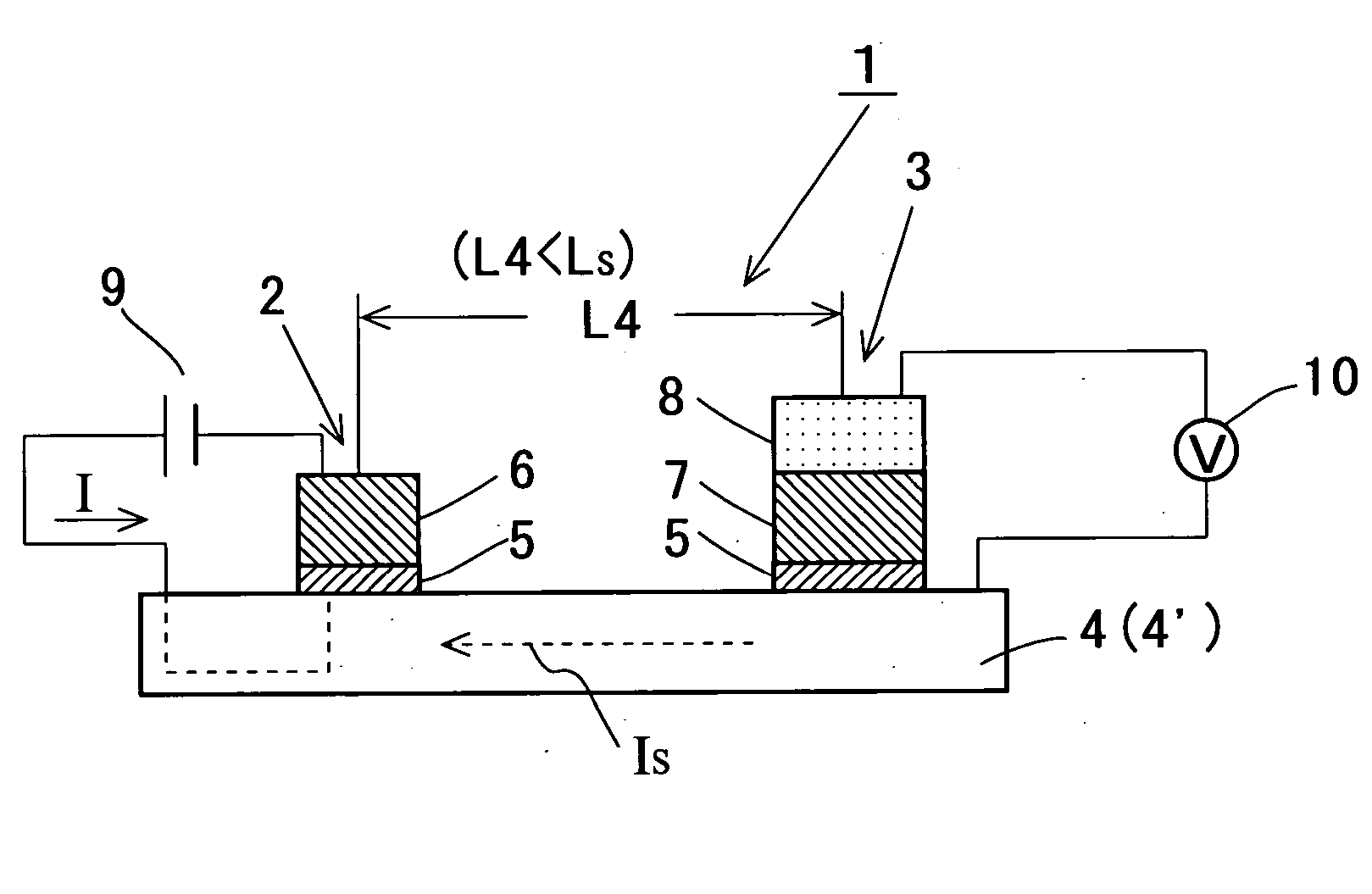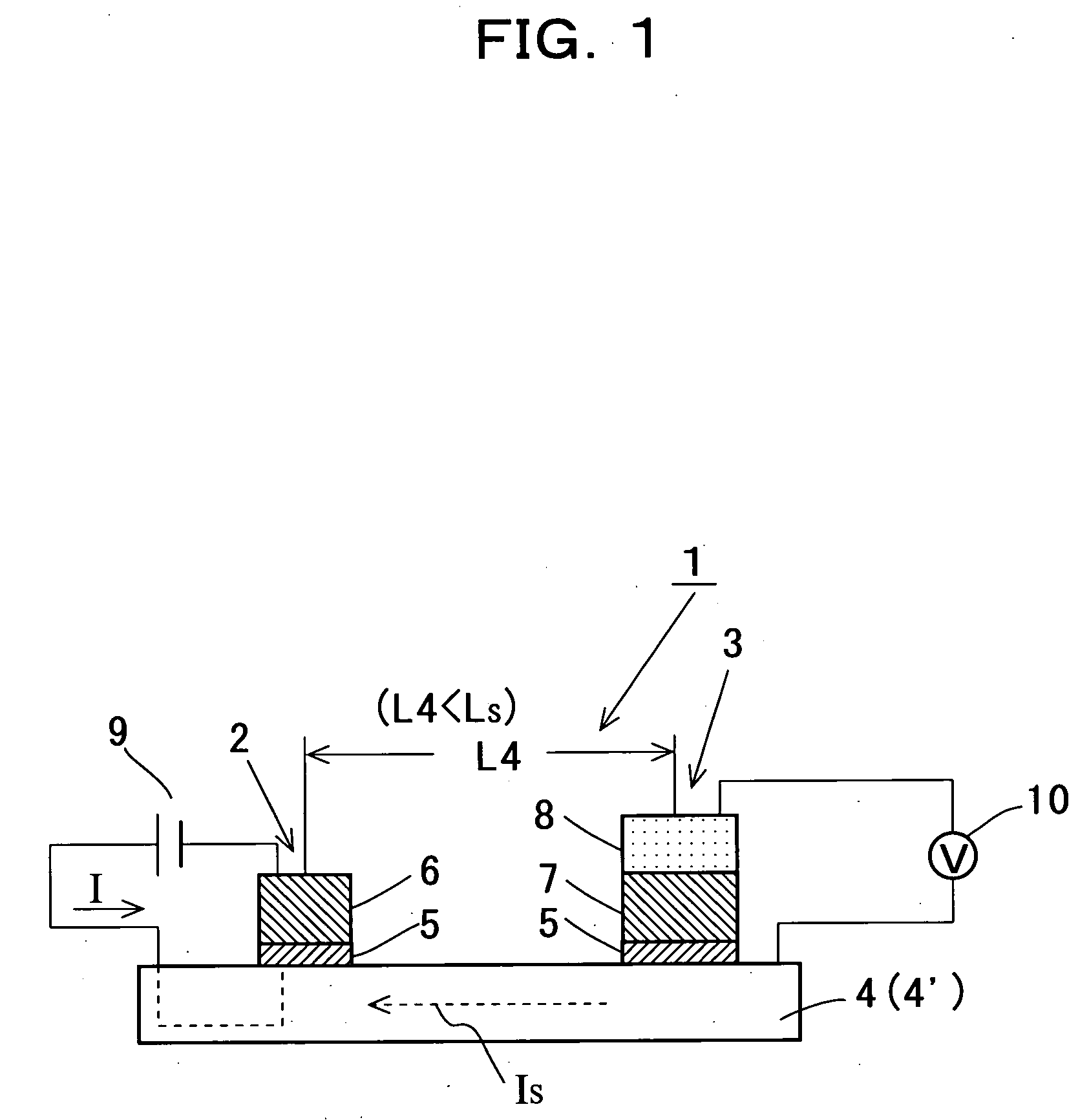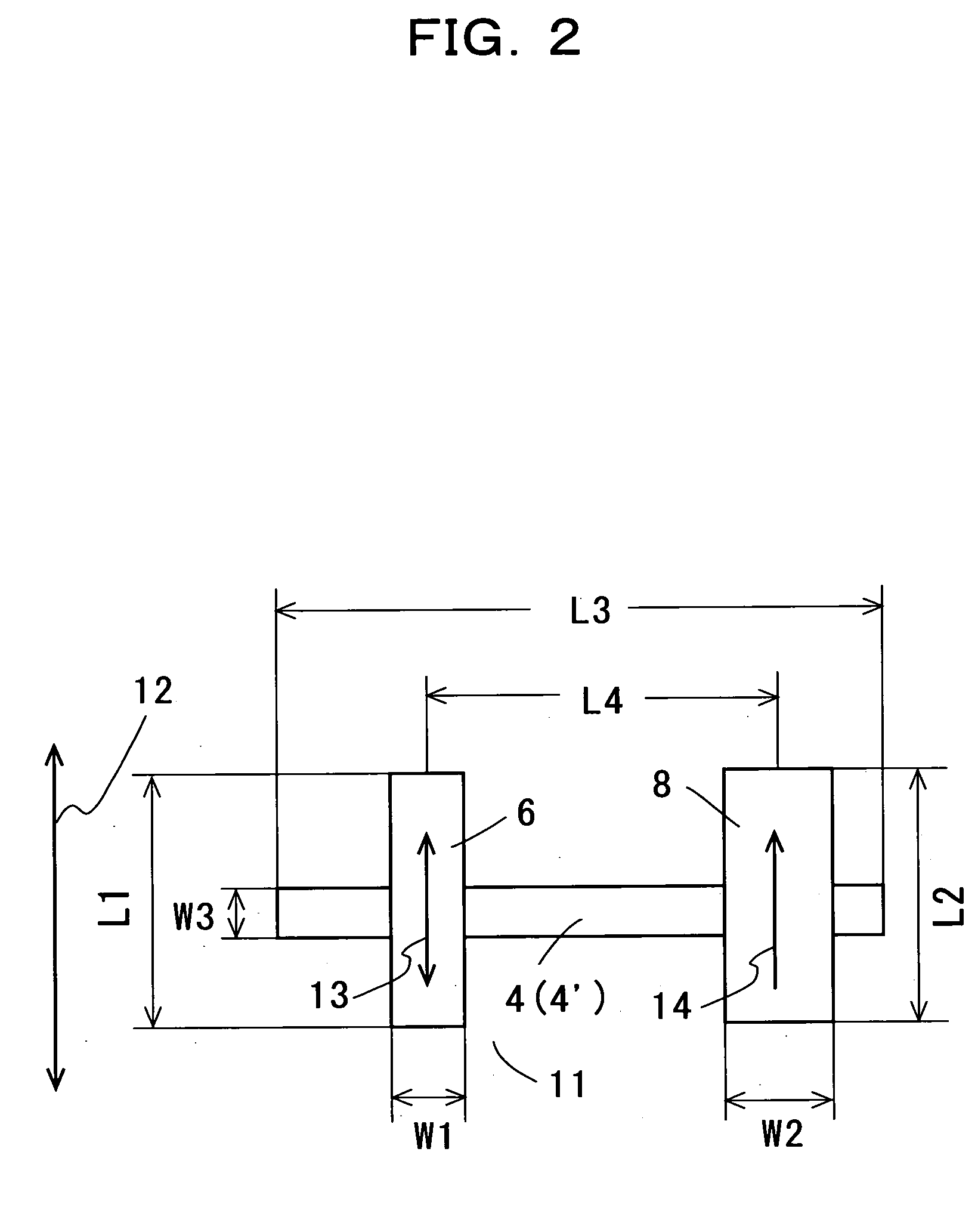Spin-injection device and magnetic device using spin-injection device
a technology of injection device and magnetic device, which is applied in the direction of superconductor device, radio frequency controlled device, instrument, etc., can solve the problems of reduced magnetic switching field, insufficient signal voltage, and small detection output resistance, so as to achieve large signal voltage, large resistance change, and large output resistance
- Summary
- Abstract
- Description
- Claims
- Application Information
AI Technical Summary
Benefits of technology
Problems solved by technology
Method used
Image
Examples
example 1
[0053] A spin injection device 1 (FIG. 1) that implements the present invention was made as follows. The GaAs film doped by Si (silicon) as an impurity was epitaxially grown to having a thickness of 100 nm onto a semi-insulating GaAs substrate 11 to form the nonmagnetic conductor 4 by using MBE (molecular beam epitaxy).
[0054] The Al film having a thickness 1.2 nm was deposited onto the GaAs thin film. This Al film was oxidized using plasma oxidation to form an Al oxide film as the insulator 5. Thereafter, Co was deposited to a film thickness of 3 nm to form the ferromagnet 7 onto the Al oxide film, and then IrMn was deposited to a film thickness of 10 nm to form the antiferromagnet 8.
[0055] The multilayered film mentioned above was miniaturized using electron beam lithography and Ar ion milling to fabricate a structure as typically shown in FIG. 1 in which the Si doped GaAs film serves as the nonmagnetic conductor 4 for two tunnel junctions 2 and 3. The Si doped GaAs film had a wi...
example 2
[0058] A spin injection device 1 (FIG. 1) that implements the present invention was made as follows. The substrate 11 was a Si substrate covered with a thermally oxidized film on which substrate a thin metal film of Nb (niobium) having a thickness of 100 nm was deposited using an ultrahigh vacuum sputtering apparatus to form the superconductor 4′. The Al was deposited to a film thickness of 1.5 nm onto the Nb thin film. This Al film was oxidized using plasma oxidation to form an Al oxide film as the insulator 5. Thereafter, Co90Fe10 alloy was deposited to a film thickness of 5 nm to form the ferromagnet 7 onto the Al oxide film, and then IrMn was deposited to a film thickness of 10 nm to form the antiferromagnet 8.
[0059] The multilayered film mentioned above was miniaturized using electron beam lithography and Ar ion milling to fabricate a structure as typically shown in FIG. 1 in which the Nb thin film serves as the nonmagnetic conductor 4 for two tunnel junctions 2 and 3. The Nb ...
example 3
[0062] A spin injection device 20 that implements the present invention was made as follows. This Example is the same as Example 2 except that in the first tunnel junction 2 the Co90Fe10 alloy film in Example 2 was replaced by a three layers film made of Co90Fe10 of 5 nm thick, Ru of 0.45 nm thick and Co90Fe10 of 3 nm thick. And, the spin injection device 20 prepared had ferromagnets 23 and 25 magnetically coupled antiparallel to each other via a nonmagnetic metal 24 in each of the first and second tunnel junctions 21 and 22 as shown in FIG. 3. In the course of this fabrication, it was confirmed that the two Co90Fe10 ferromagnets were magnetically coupled antiparallel to each other via Ru in the layered structure of Co90Fe10 (5 nm), Ru (0.45 nm) and Co90Fe10 (3 nm).
[0063] In the spin injection device 20 of the present invention so prepared, the current I flowed, at a temperature of 1.5 K, from the Co90Fe10 (5 nm) / Ru (0.45 nm) / Co90Fe10 (3 nm) film via the Al oxide film to the Nb thi...
PUM
| Property | Measurement | Unit |
|---|---|---|
| aspect ratio | aaaaa | aaaaa |
| aspect ratio | aaaaa | aaaaa |
| aspect ratio | aaaaa | aaaaa |
Abstract
Description
Claims
Application Information
 Login to View More
Login to View More - R&D
- Intellectual Property
- Life Sciences
- Materials
- Tech Scout
- Unparalleled Data Quality
- Higher Quality Content
- 60% Fewer Hallucinations
Browse by: Latest US Patents, China's latest patents, Technical Efficacy Thesaurus, Application Domain, Technology Topic, Popular Technical Reports.
© 2025 PatSnap. All rights reserved.Legal|Privacy policy|Modern Slavery Act Transparency Statement|Sitemap|About US| Contact US: help@patsnap.com



